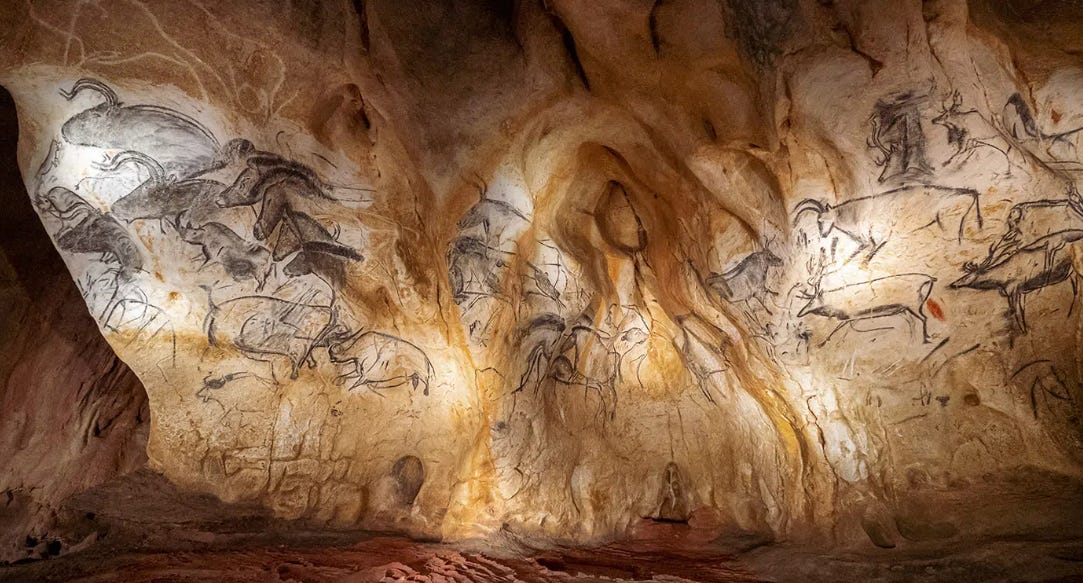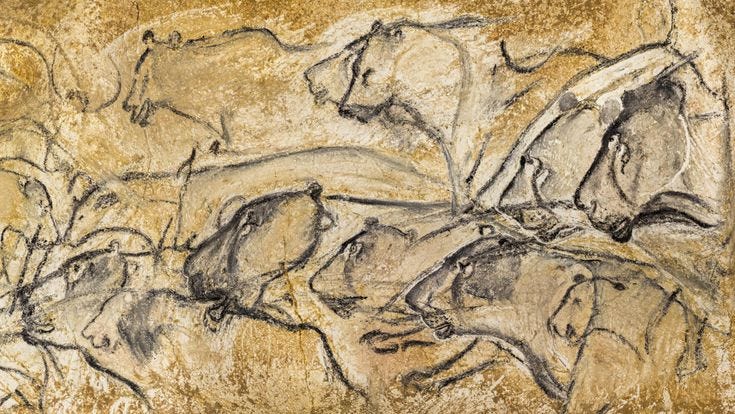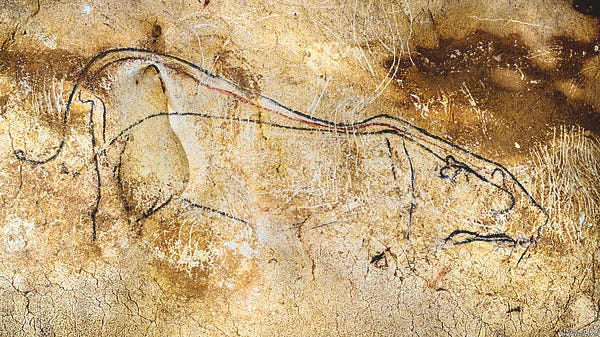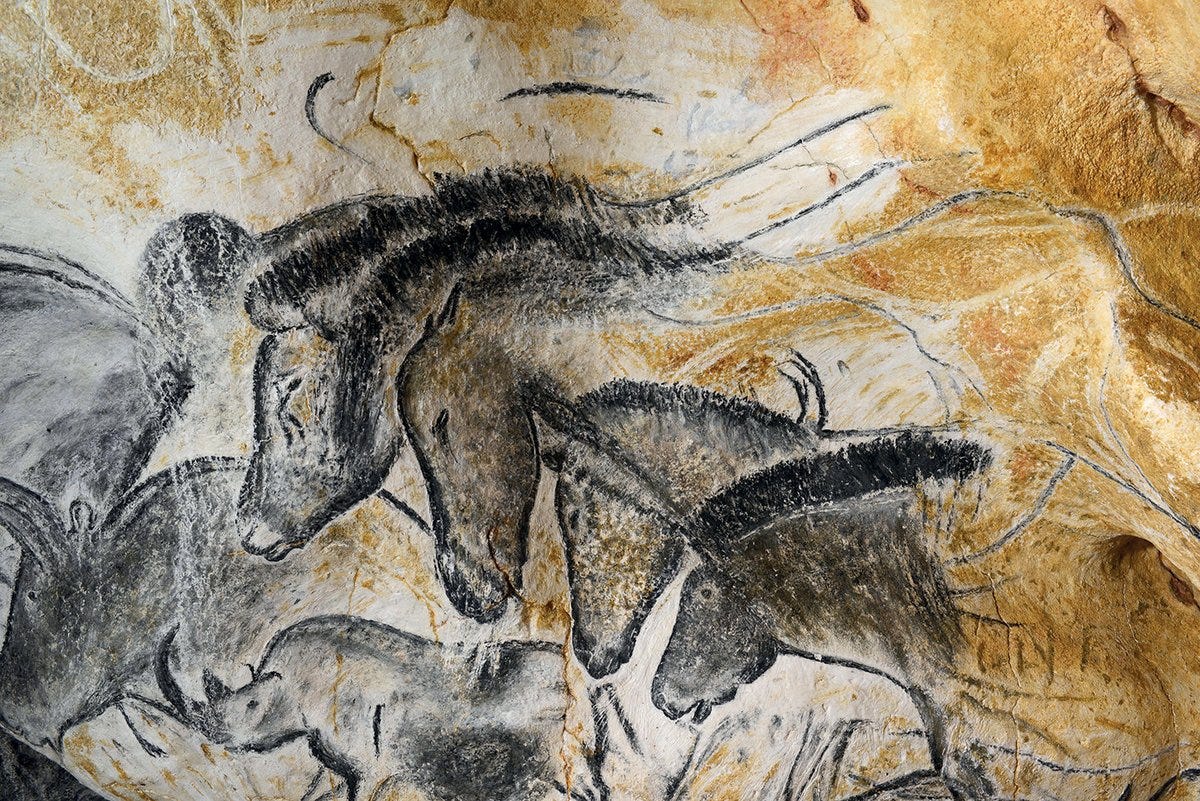Europe’s oldest art

Twenty-one thousand years: that’s how long a singular cavern system in the Ardèche region of southern France remained locked, sealed away by a massive landslide. It boggles the mind to think about all that happened to humanity in that immense stretch of time, all those long, dark unrecorded centuries where we rose slowly from hunting and gathering, using stone and bone tools, battling to survive at the end of the last great ice age1. Many of the animals these people would have once known so well from hunting them have since gone extinct.

In that unfathomable time, groups formed into tribes and tribes grew into cultures, cultures into kingdoms and the most ancient empires rose and fell. We learned how to bring food out of the ground, to work metals and build permanent settlements. Great wars erupted, immense movements of people spread across the steppes and forested, empty lands. Entire cultures, with their unique religions and myths and ancient stories, flourished and faded and were forgotten.

And yet, within that sealed cavern, that time capsule, nothing changed, not even movement or change of air, no sound but the steady drip of limestone-saturated water. Locked away in the absolute darkness, Chauvet Cave remained untouched, hiding for all that time its great artistic, cultural and anthropological secret treasure.
When the cave was finally rediscovered in 1994, what emerged from the darkness stunned the world: extraordinary, striking and lifelike depictions of animals such as horses, lions, rhinoceroses and mammoths, rendered with remarkable detail and fluidity. The artists used the natural contours of the rock walls to give depth and motion to the animals, creating scenes that seemed to ripple and breathe in the explorers’ torchlight. Some images overlap, suggesting generations of artists returning to the same sacred space, adding their own marks to the story.

In today’s post for paid subscribers, we’re going to take a quick side trip to explore the profound artistic, symbolic and spiritual significance of Chauvet Cave.
Imagine standing at the entrance of a cavern sealed for twenty-one millennia, an unimaginably vast expanse of time, during which our race transformed from hunter-gatherers using stone tools, to the builders of empires, and wielders of unimaginable weapons and technologies. We’ll do a deep dive into what researchers have uncovered about this cave with its paintings, and discuss why they seem so obviously to function as sacred images - prehistoric icons - and reflect on what this tells us about the enduring human drive to create art that connects the material and spiritual worlds.
Included in the post are some truly fascinating materials - including some downloadable pdfs - that have been made available to the public by the very tiny handful of researchers who have been allowed into the cave to record its secrets.




